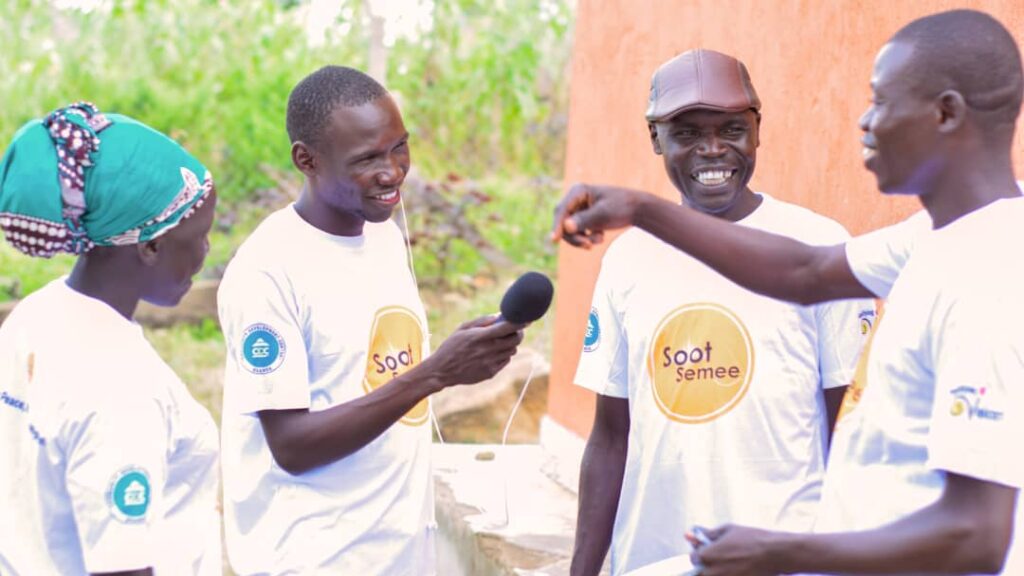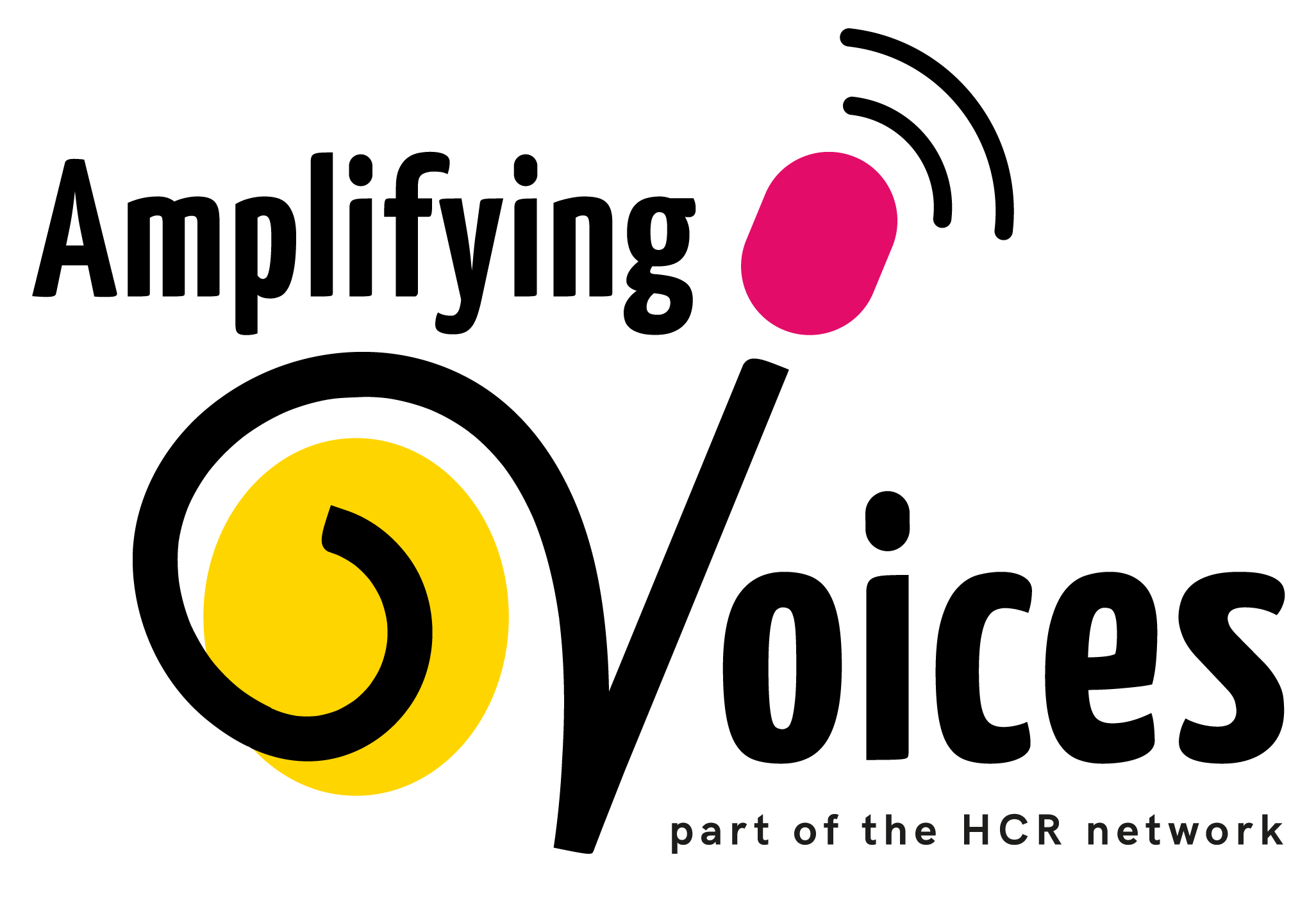
What does peace look like to you?
Soot Semee (Voice of Compassion) is a peacebuilding project that brings people together through speakerbox podcastsA speakerbox, or portable digital audio player plays podcasts stored on TF memory cards slotted into the back of the device. Soot Semee operates in the Omugo 4 refugee settlement in northern Uganda.
Last week the Soot Semee coordinators organised two days of community-centred media workshops to train new volunteers and to refresh the existing team’s skills. As well as learning media skills such as how to record interviews and make effective community service announcements (CSAs), the training workshop includes time to reflect on community goals for development and exploring opportunities to work together in other “off-air” activities. To mark the end of the training the community organised a peace-friendly football match.
So what exactly does Soot Semee mean by “peacebuilding”?

Soot Semee volunteer team, Nov 2022
Peacebuilding is sometimes understood as aiming for a cessation of armed conflict. However, it is important to know what everyday peace looks like to the community members involved. You might pause for a moment and ask yourself:
“If I were to think about my own situation, rather than geo-political events, what does peace look like to me?”
This is the sort of exercise that the organisation Everyday Peace Indicators does regularly in their mission to build bridges between communities and the diverse organisations working to build peace.
Taking a cue from their work, we asked this question to several community members in Omugo 4. The responses are interestingly varied:
Susan – “Peace is like staying good calmly with love”.
Idoru – “Peace is like for example if you have a wife, and you understand each other very well, that’s how peace looks like”.
Maka – ‘Peace is when there is always enough food at home
Moses – “To me something called peace, is like when you stay well with other people, with good security and no fear, that’s peace”.
Isaac– “Peace is when you live in a place that has no war”
Alfred – “peace is when there is money at home”
Margret– “peace is when every family member embraces love for one another”.
Simon – “Peace is when you live without threatening words of ending someone’s life. You stay stress free”.
Florence – “Peace is when you have everything at home”
Mary – “What also looks like peace is when someone wrongs you, then you don’t need to keep it in your heart because you want to pay back, but instead show your goodness to him or her”.
Click play to hear community members voice their responses in Bari and Juba Arabic.
You may have noticed that only one response refers to war, and just one other refers to threat of violence. The rest of the responses refer to relationships, food security and wellbeing.
Our partners, Community Development Centre, who lead the Soot Semee project, also belong to the South Sudanese refugee community they serve. They understand that building a place where peace can thrive means addressing all these everyday aspects of peace. This is reflected in Soot Semee’s programme planning and the associated off-air activities outlined below.

This month, Soot Semee audio programmes will address environmental issues, while community volunteers have organised activities to clear up plastic bottles and bags from Omugo 4 village. They have also made plans to plant new trees.
Trees contribute to a more resilient natural environment. They can also help reduce violence. A lack of trees has led, in some cases, to conflict over places to collect firewood.
In December, Soot Semee volunteers will focus on wellness with programmes promoting hygiene and sanitation. The volunteers have also organised days to clean up the water collection points along with the locally organised water management committees. Clean water and good hygiene also contribute to everyday peace as it is defined by the Omugo 4 community members.
